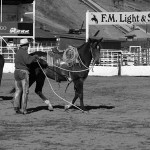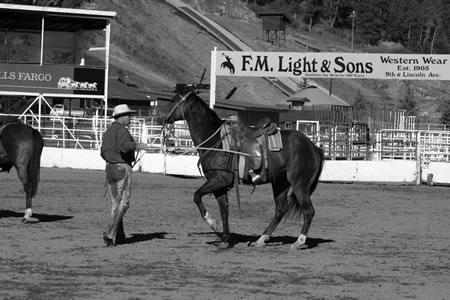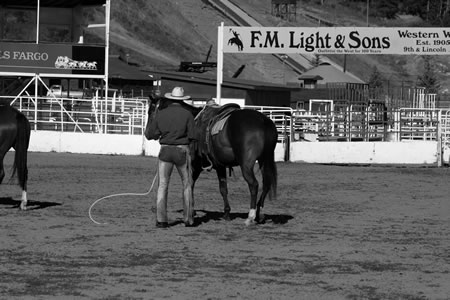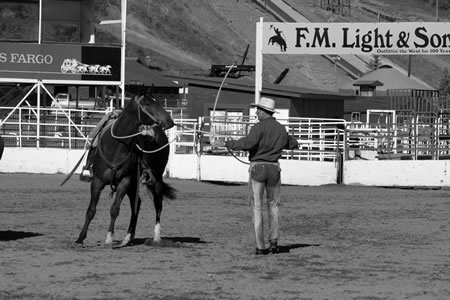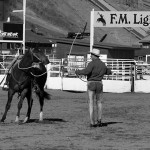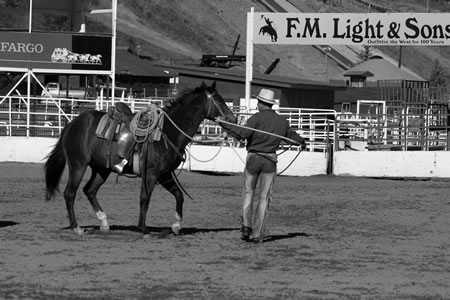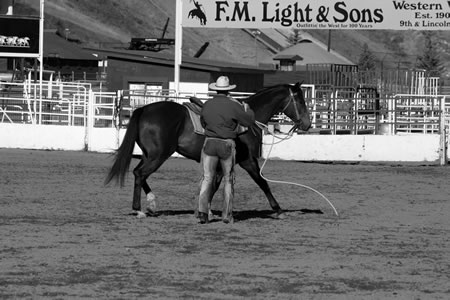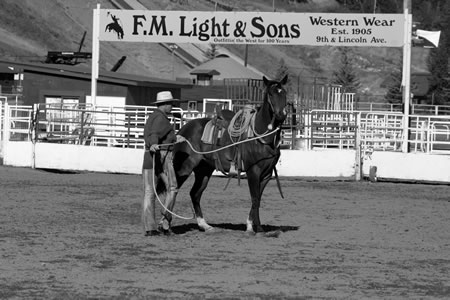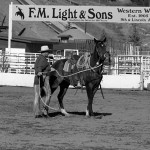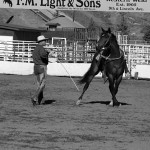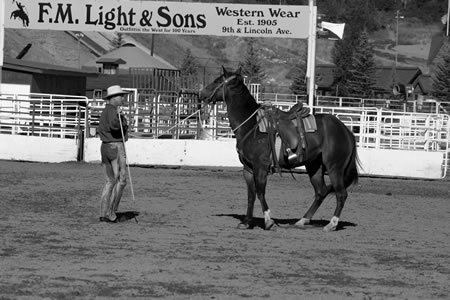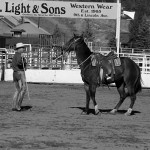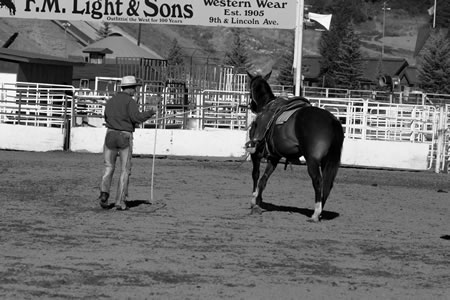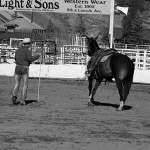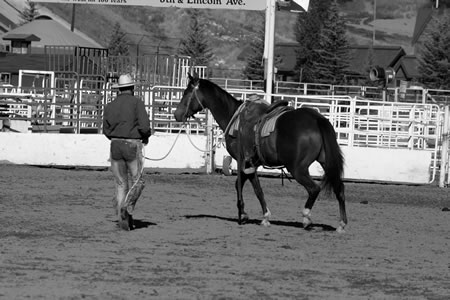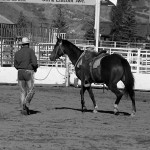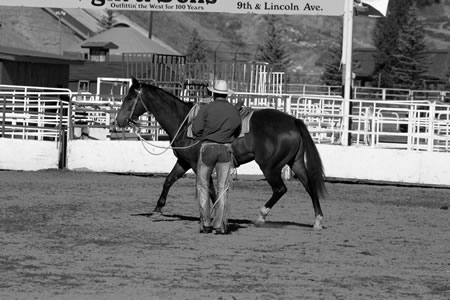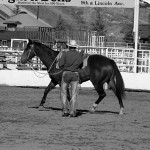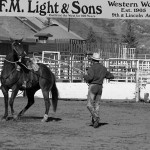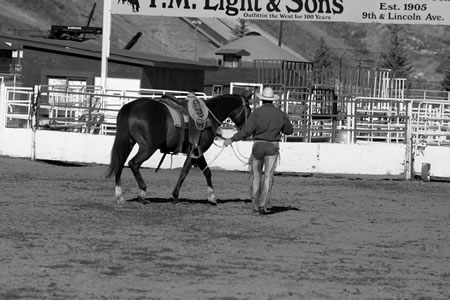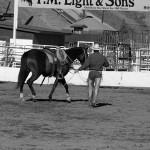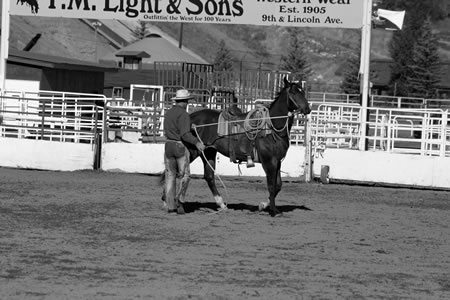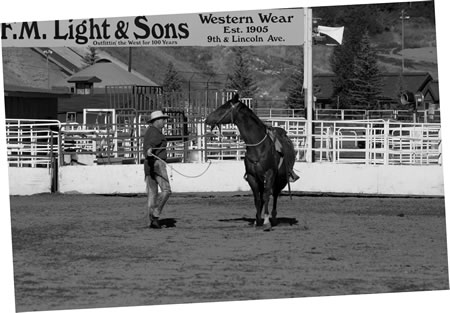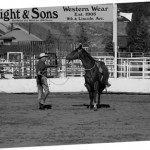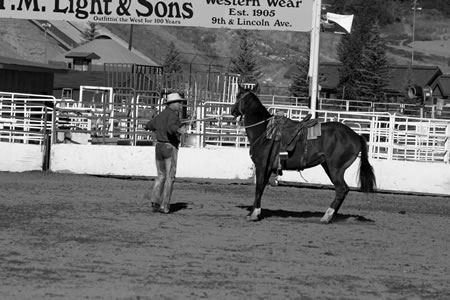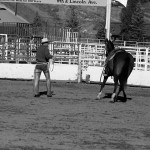With Buck Brannaman
This article originally appeared in Eclectic Horseman Issue No.27
I learned this exercise by watching people get taken advantage of by horses. This is the exact opposite of what horses typically train you to do; they gradually advance toward you all the time and you end up back pedaling to avoid getting stepped on. So your horse ends up taking you closer to his buddy or the gate, wherever it is that he wants to go. So what we are doing here is reversing the roles so that all the forward steps are coming from you.
Once you feel as though you have a pretty good handle on the basic driving your horse past you and changing directions by moving your horse’s hind and front quarters on a circle, the next piece you need to add is what I like to call the half-circle exercise.
Simply put, you will start your horse around you in a circle, then walk forward in a straight line, working your horse back and forth in front of you. You will continue to advance at a steady pace. You might need to walk slower than I might to start until you get your timing sorted out and your horse gets the idea of the exercise. This exercise puts emphasis on your horse’s front quarters. His hind will step over, but not quite as cleanly as they will when you are working on a full circle.
The half-circle exercise builds directly on how I had you starting your groundwork by first clearing out the front quarters to initiate your circle (EH #26). This is that same maneuver repeated over and over while you are advancing. By moving across the pen, you are giving yourself the angle that you need for the front quarters to repeatedly sweep across.
This will put quite a bit of pressure on your horses, because you are crowding them quite a bit to accomplish this exercise. With some horses, especially young ones, it can bring up some fear, but this is where I want to find out about that concern, before I get on. In addition to focusing on the front quarters, this exercise also teaches your horse a little leg yield. He has to move a little bit sideways as you advance to respect your space as he moves around you.
I will often do this exercise with my flag; in fact, I prefer to, because then my horse can get used to the flag at the same time. Granted, you have to be a little handier because you are switching directions so quickly. But once you feel more confident with your halter rope, you might challenge yourself to use the flag.
https://eclectic-horseman.com/mercantile/equestrian-books/philosophical/the-faraway-horses-soft-cover-by-buck-brannaman/
If you find your horse is going too far past you, getting behind you, it might be because you are not switching your hands on your rope early enough to change directions. Remember, your horse should be operating on a half-circle direclty in front of you.
Once you get this half-circle exercise working for you, your horse running over you will be a thing of the past. I’m not saying that learning this exercise will be easy. It will challenge your timing and coordination, but it is essential. It is something you really have to have working on the ground.
Remember, all these exercises we do on the ground are connected to what we do with our horses, and how they operate when we get on their back. All that is changing is the position from which you lead the dance.



